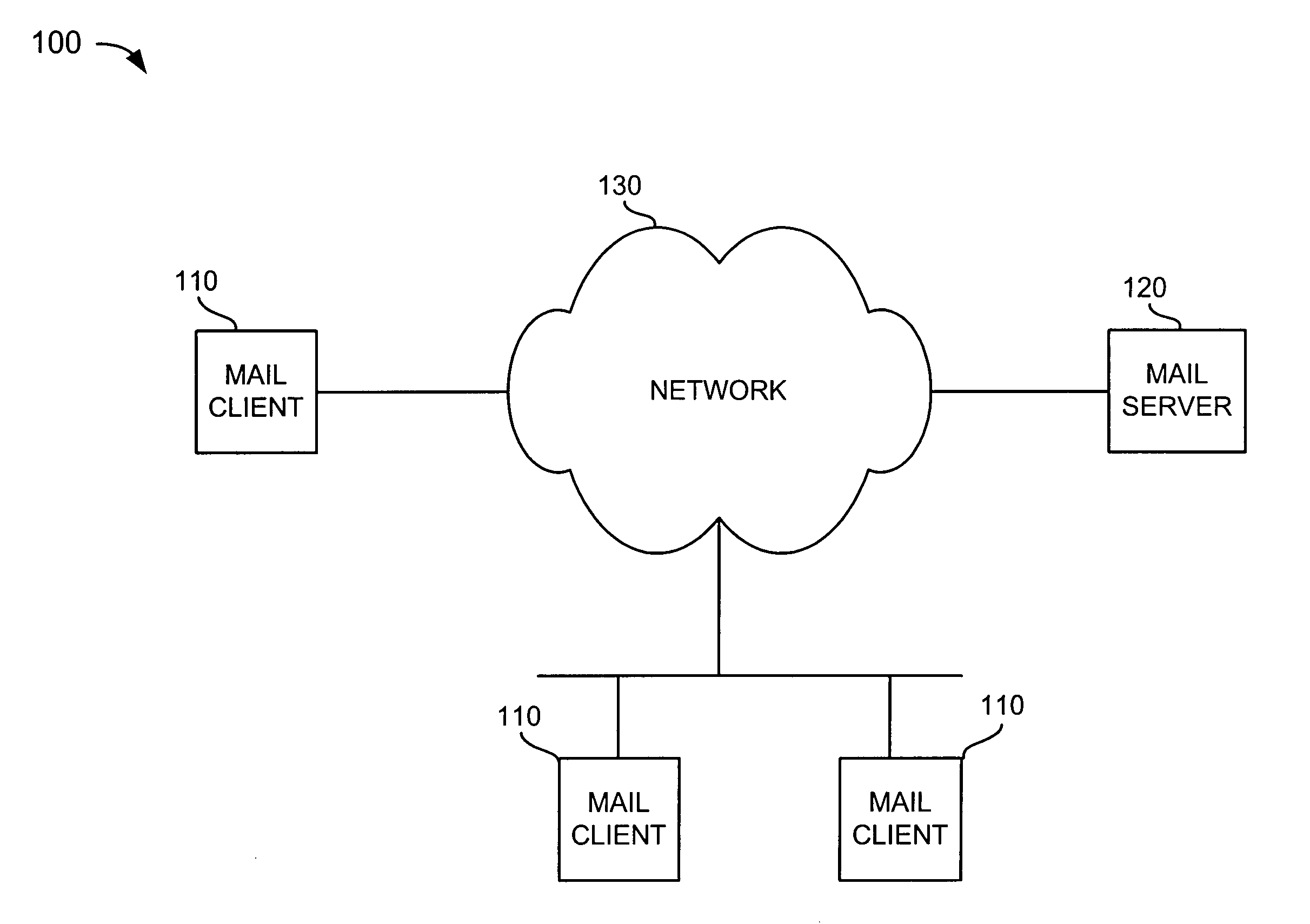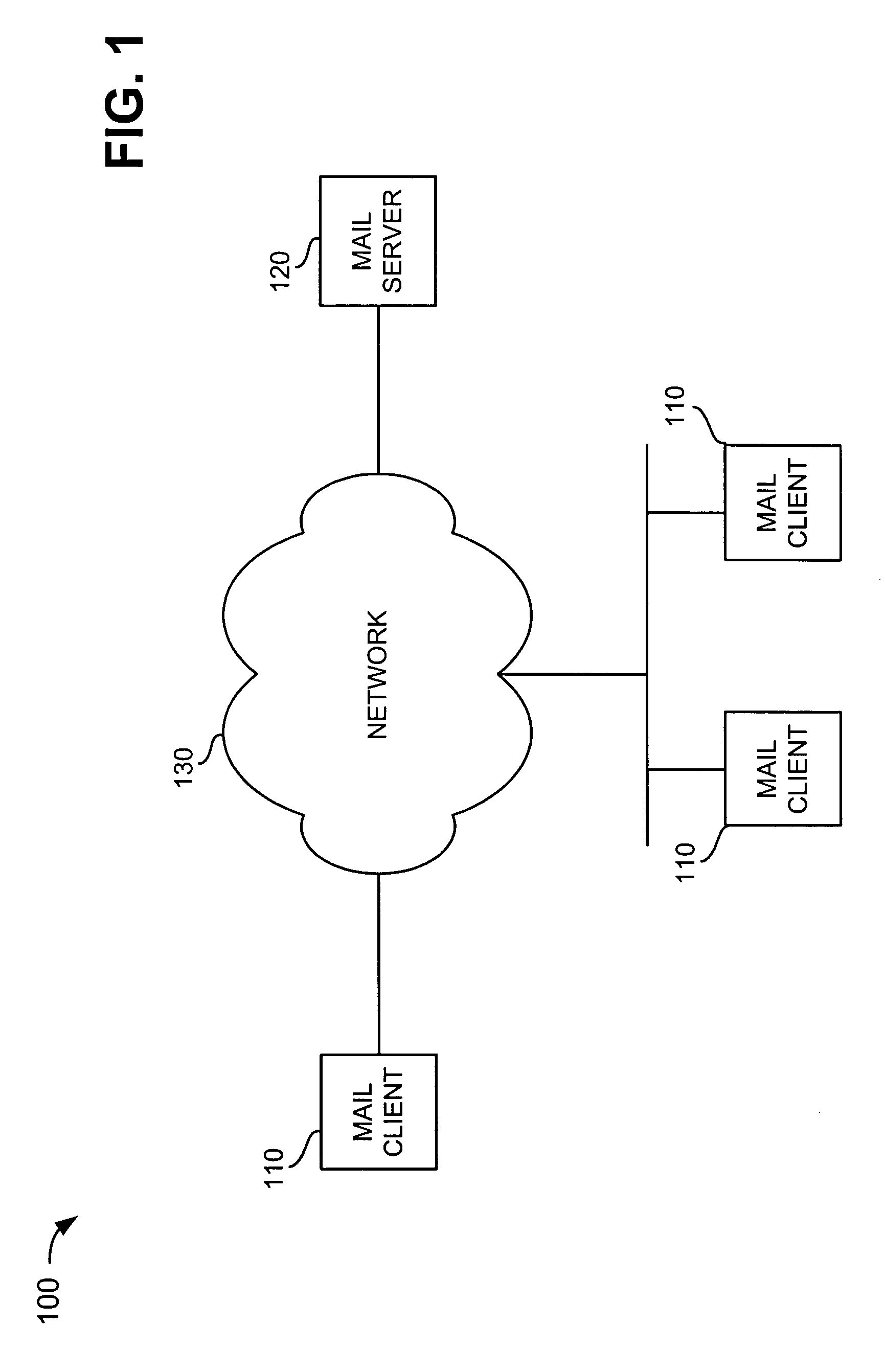Hash-based systems and methods for detecting and preventing transmission of unwanted e-mail
a technology of unwanted e-mail and system, applied in the field of network security, can solve the problems of increasing the size of the internet, the threat posed to users of the internet, and the shear volume of commercial e-mail within the network and/or the transmission of unwanted emails
- Summary
- Abstract
- Description
- Claims
- Application Information
AI Technical Summary
Problems solved by technology
Method used
Image
Examples
Embodiment Construction
refers to the accompanying drawings. The same reference numbers in different drawings may identify the same or similar elements. Also, the following detailed description does not limit the invention. Instead, the scope of the invention is defined by the appended claims and equivalents.
[0024] Systems and methods consistent with the present invention provide virus, worm, and unsolicited e-mail detection and / or prevention in e-mail servers. Placing these features in e-mail servers provides a number of new advantages, including the ability to align hash blocks to crucial boundaries found in e-mail messages and eliminate certain counter-measures by the attacker, such as using small Internet Protocol (IP) fragments to limit the detectable content in each packet. It also allows these features to relate e-mail header fields with the potentially-harmful segment of the message (usually an "attachment"), and decode common file-packing and encoding formats that might otherwise make a virus or w...
PUM
 Login to View More
Login to View More Abstract
Description
Claims
Application Information
 Login to View More
Login to View More - R&D
- Intellectual Property
- Life Sciences
- Materials
- Tech Scout
- Unparalleled Data Quality
- Higher Quality Content
- 60% Fewer Hallucinations
Browse by: Latest US Patents, China's latest patents, Technical Efficacy Thesaurus, Application Domain, Technology Topic, Popular Technical Reports.
© 2025 PatSnap. All rights reserved.Legal|Privacy policy|Modern Slavery Act Transparency Statement|Sitemap|About US| Contact US: help@patsnap.com



